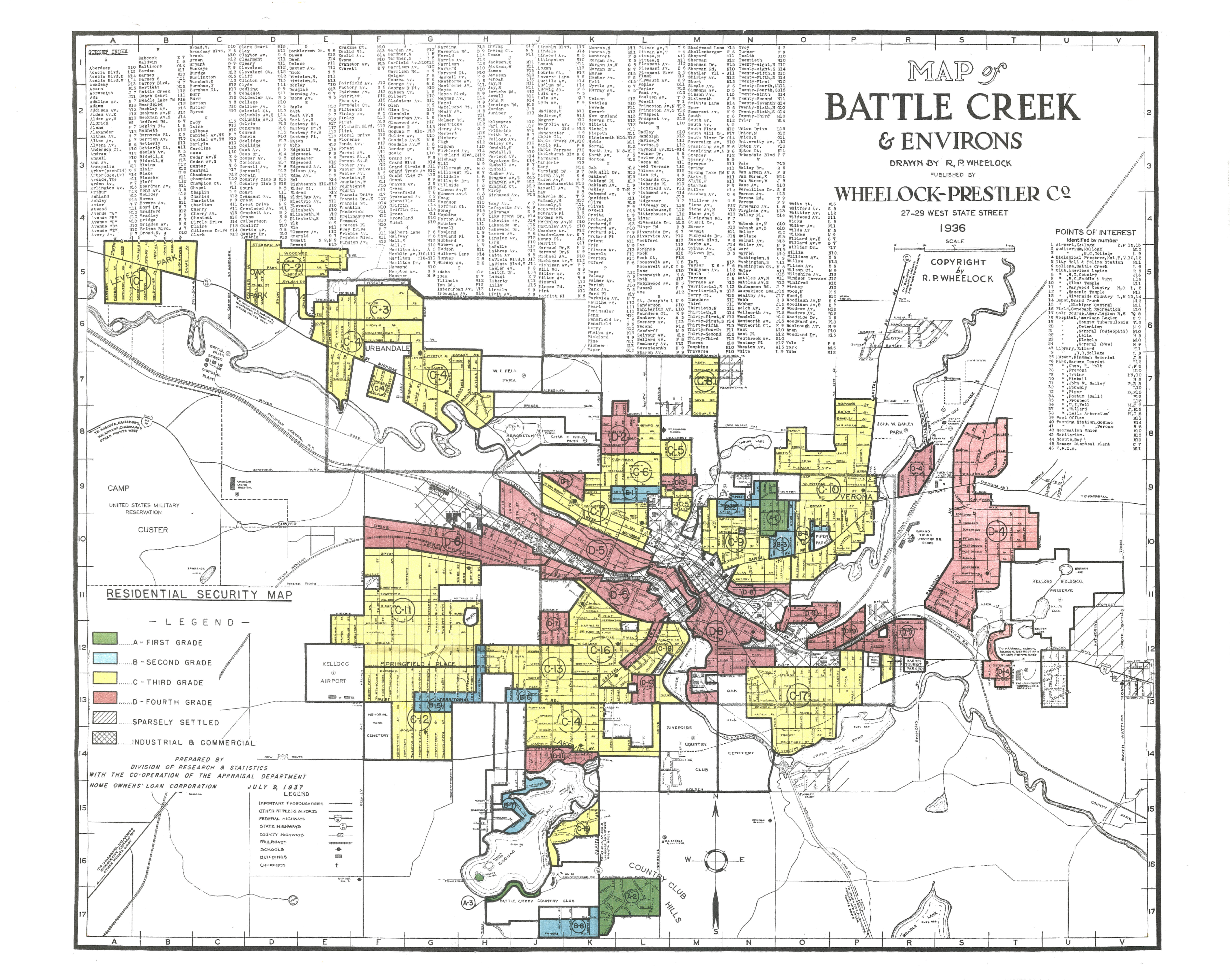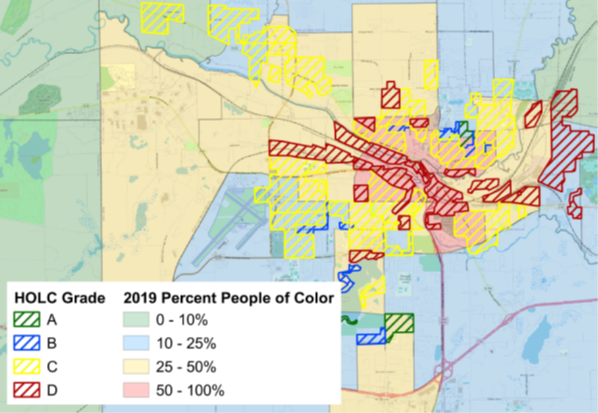Battle Creek
The federal government redline mapped Battle Creek in 1936. Consistent with the requirements of the government Underwriting Manual, the redline mapping specifically targeted residents of color, deeming their neighborhoods as “hazardous” to investment because they had residents of color or were even near residents of color. The original redlining map is shown below. While HOLC did not itself implement these redlining maps, it promoted these practices and showed private industry groups and the FHA how to reproduce these maps. We also have a map overlaying the original HOLC boundaries on 2019 segregation, which starkly show the continued effects of these racist practices. The strong visual connection between original HOLC grades and present-day racial segregation, shows a legacy of redlining on present-day outcomes.

Battle Creek Redline Grading Justifications
The racist language and explanations below are quoted from the “Area Description Files” filled out by government appraisers. The language and justifications are coarse and offensive. Nonetheless, it is important to remember our past in all of its coarseness is offensiveness to fully understand the context that we confront today, especially when developing equitable housing policies.
Redlined neighborhoods
Government appraisers redlined the “Old downtown business center of the City” of Battle Creek because it had “Negro” “inhabitants.” This includes neighborhoods with incomes higher than some yellow-graded areas, but they were redlined because “Infiltration of Foreign and negro.” In the north, the redlined neighborhoods are where most Black people lived and that is why there were redlined. The eastern neighborhoods were redlined because it was only rentals to railroad employees.
Yellow-graded neighborhoods
Government appraisers yellow-graded neighborhoods between the red and blue neighborhoods, despite having similar incomes in many cases to blue neighborhoods, because they either bordered redlined neighborhoods or there was “Infiltration of Foreign and negro.”
Blue-graded neighborhoods
Neighborhoods were generally graded blue because they were not bordering redlined neighborhoods and were entirely “White” and not bordered by Black or “foreign” neighborhoods. While these neighborhoods had higher incomes, some yellow-graded neighborhoods had similar incomes, but were not graded blue because they bordered redlined neighborhoods.
Green-graded neighborhoods
The green-graded neighborhoods were wealthier, but some had similar or even lower incomes than the blue-graded neighborhoods. They were graded green because they did not border lower-graded areas and because they had the “Best people of the City.” In the case of the southern neighborhoods, it was “Reserved for members of the Country Club.”
The Legacy of Redlining in Battle Creek
Segregation
We overlay the historical HOLC “redlining” map on present-day demographic data to show the persistence and continued relevance of these racist policies on present-day segregation. We mirror the racist HOLC color gradation to help visualize the continued segregation, as a lasting impact of redlining.

Higher segregation is associated with lower incomes, lower educational attainment, more crime, worse health outcomes, and higher inequality. But segregation is not the only lasting impact of redlining in Michigan Cities, or in Battle Creek. Researchers have shown that redlining also directly reduced many of these outcomes.
This research was conducted by Michigan State University Assistant Professor and Extension Specialist Craig Wesley Carpenter, Ph.D. (@DrCWCarpenter or cwcarp@msu.edu).



 Print
Print Email
Email